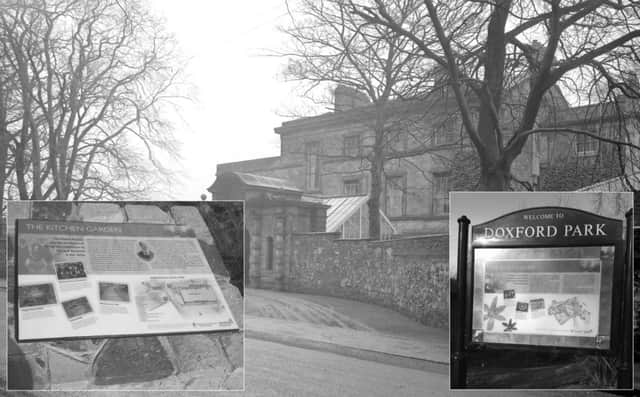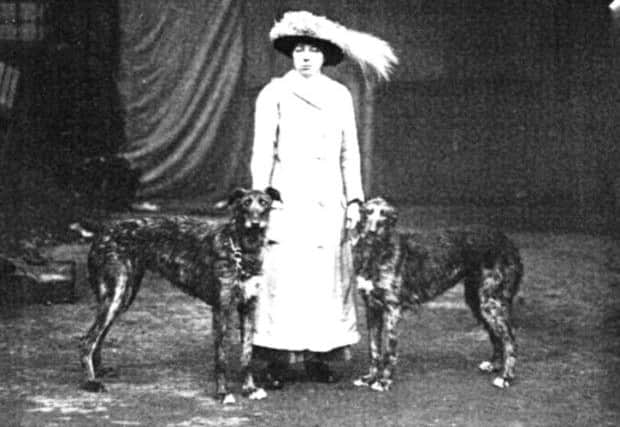History of Sunderland's '˜Secret Garden' now set in stone


Three information plaques – two stone-built and one metal – will be unveiled this Friday at Doxford Park by the site’s Friends group, to help visitors find out more about the area.
“Doxford Park is a hidden gem,” said vice-chairman Douglas Smith. “It was originally the grounds of Silksworth House and it is only relatively recently that the site has been public.


Advertisement
Hide AdAdvertisement
Hide Ad“Our plaques are designed to inform people of the wealth of history that surrounds them and guide them to parts of the park where significant events took place over the decades.
“There is also a time-line featuring Old Silksworth Village, as well as the park and Doxford House, which shows that our history goes back thousands of years.”
Hunter-gathers are believed to have made Silksworth their home in prehistoric times, while monks passed through on their way to Durham with St Cuthbert’s body in the Saxon era.
The area’s name, however, dates to the Viking period –when Silki, a possible tribal chieftain, settled on the land and gave his name to the holding – known as a “worth”.


Other dates of note include:
Advertisement
Hide AdAdvertisement
Hide Adl Norman era: The Manor of Silksworth was owned by the monks of Durham.
l Middle Ages: Silksworth was an agricultural community with a windmill and brewery.
l Tudor era: It was part of the Silksworth Hall manorial lands.
l 1740s: Cream and brown earthenware was produced at Silksworth for use as kitchenware.
Advertisement
Hide AdAdvertisement
Hide Adl 1780: William Johnson built Silksworth House, later known as Doxford House.
l 1823: Hetton Mineral Waggonway was built by George Stephenson along the estate.
l 1830s: A garden with walls heated by an underground boiler was built to grow fruit trees.
“Silksworth House changed hands several times over the decades until, in 1902, shipbuilder Charles Doxford took over a 99-year lease and later bought the estate,” said Douglas.
Advertisement
Hide AdAdvertisement
Hide Ad“He developed it into a grand house and, by working with head gardener Henry Whiteley – my grandfather -– he laid out the gardens and created a lake and cascade.
“His daughter, Aline, took over the estate in 1935, but the gardens remained private – hence a ‘Secret Garden’ – until after her death in 1968, when she bequeathed it to the council.”
Just a few years later, in 1973, the gardens were opened as a public park and Silksworth House was renamed Doxford House by councillors, as a tribute to the Doxford family.
Over the decades the house was used as student accommodation by Sunderland Polytechnic, as well as a rehab unit.
Advertisement
Hide AdAdvertisement
Hide AdThen, in 2014, work started on turning it back into a private family home.
But the park remains public – and, thanks to the £100,000-plus raised by the Friends group over the years – many of its unique features, including a walled garden, have been retained.
“The beautiful trees, some quite mature, are a major feature.
“On snowy days the park is transformed into a magical place with frozen waterfalls along the stream,” said Douglas.
Advertisement
Hide AdAdvertisement
Hide AdThe Friends of Doxford Park was formed almost 16 years ago and, over that time, members have raised funds to drain and clear the lake, improve paths and revamp the cascade area.
The latest history plaque project took almost a year and cost over £5,000, with funding provided by Sunderland City Council’s East Strategic Initiative Budget.
“Much of the time was spent on research. There is just so much history in this area, and we were determined to get all our facts and figures correct,” said chairman Colin Barksby.
“Doxford Park is unique; it’s not a play park, or a recreation field – it was originally the garden of a house and therefore still has some of its wonderful original features.
“We have tried to keep it as close as possible to the original layout over the years, and not change it too much.
“But we are very keen to show people its history, as well.”